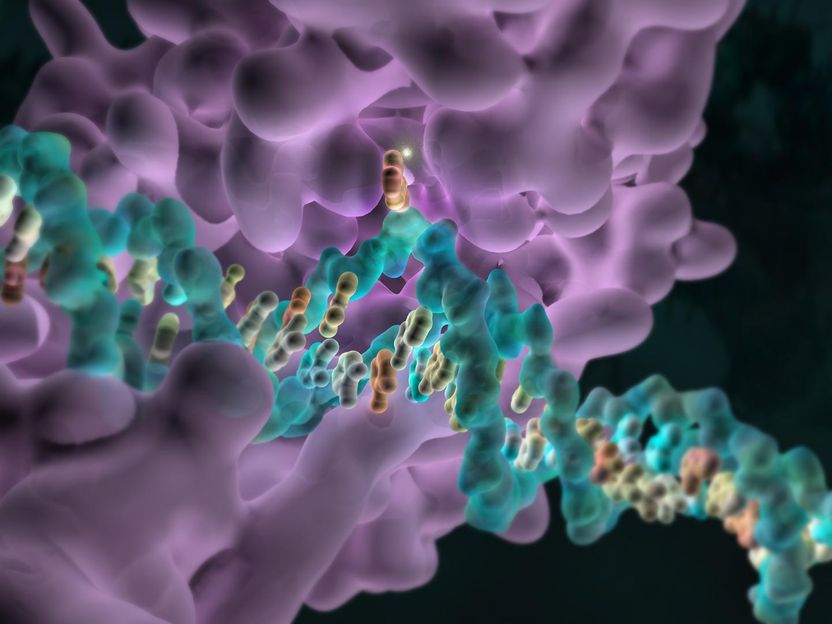Epigenetic signatures that differentiate triple-negative breast cancers
A new study, published in Nature Communications, compares the breast cancer DNA 'methylome' with that of healthy individuals. The methylome provides a new picture of the genome and shows how it is epigenetically 'decorated' with methyl groups, a process known as DNA 'methylation'. The study reveals "distinct methylation patterns" in the primary biopsy breast cancer cells indicating better or worse prognosis.

The methylating enzyme DNMT (purple) cradles the DNA molecule as a methyl group is added to DNA.
Dr Kate Patterson
Triple-negative breast cancers, which make up 15-20% of all breast cancers, lack any of the three receptors (oestrogen, progesterone or HER2) that would make them responsive to targeted drugs. Overall, patients have a higher risk of disease recurrence and shorter survival than those with other breast cancers. Triple-negative breast cancer patients tend to fall into two categories: those that succumb to their disease within 3-5 years, regardless of treatment; and those that remain disease free for longer than the average non-triple-negative breast cancer patient (at least 8 years post-diagnosis).
At present, there is no reliable way to 'stratify' triple-negative cancers into these two sub-groups. Clinicians use tumour size, degree of spread, and infiltration of lymph nodes to determine whether a patient falls into a high-risk or low-risk category. Ironically, the outcome of triple-negative breast cancers is far less associated with cancer stage than other breast cancers.
Professor Susan Clark, Dr Clare Stirzaker and Dr Elena Zotenko from Sydney's Garvan Institute of Medical Research, performed whole genome methylation capture sequencing on archival tissue samples from triple negative breast cancer patients and matched normal samples, followed by next generation sequencing to determine cancer-specific changes in DNA methylation.
Most read news
Other news from the department science

Get the life science industry in your inbox
By submitting this form you agree that LUMITOS AG will send you the newsletter(s) selected above by email. Your data will not be passed on to third parties. Your data will be stored and processed in accordance with our data protection regulations. LUMITOS may contact you by email for the purpose of advertising or market and opinion surveys. You can revoke your consent at any time without giving reasons to LUMITOS AG, Ernst-Augustin-Str. 2, 12489 Berlin, Germany or by e-mail at revoke@lumitos.com with effect for the future. In addition, each email contains a link to unsubscribe from the corresponding newsletter.


















































